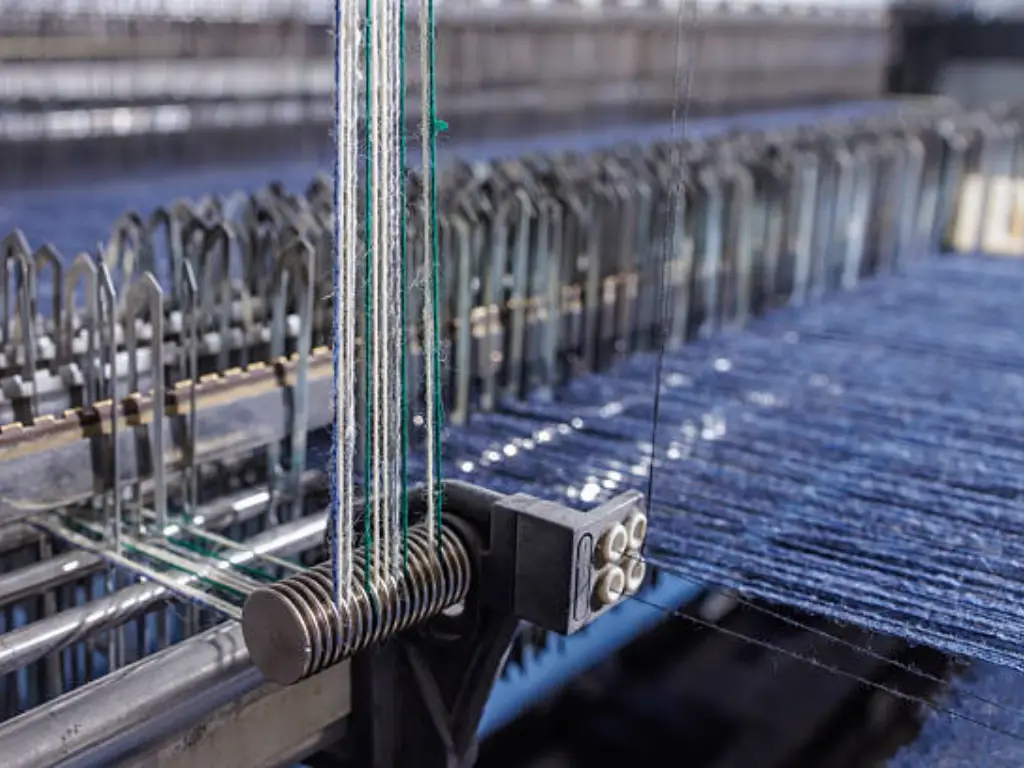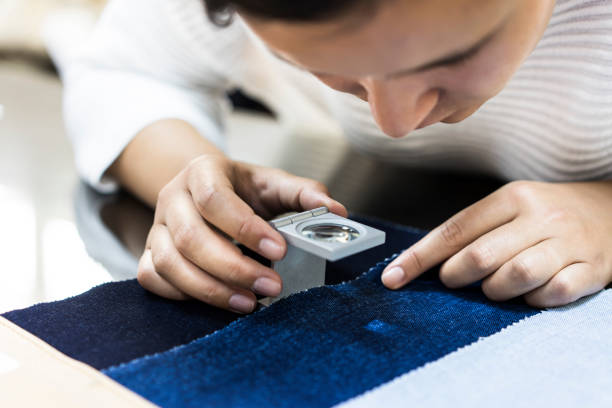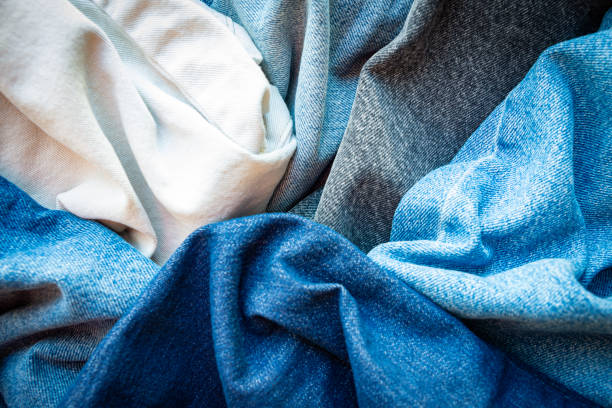يأتي القطن المعاد تدويره من نفايات الأقمشة والملابس القديمة التي تتم معالجتها مرة أخرى وتحويلها إلى ألياف. استخدام القطن المعاد تدويره في صناعة الدنيم يوفر الماء, يخفض انبعاثات ثاني أكسيد الكربون, ويحافظ على المنسوجات خارج مدافن النفايات. مع إعادة التدوير الميكانيكية المناسبة والمزج الدقيق, يمكن أن يحافظ الدنيم على مظهره وقوة الشد. تتناول هذه المقالة المصادر بإيجاز, يعالج, مزج, والتشطيب حتى يتمكن المصنعون من جعله متينًا, الجينز الصديق للبيئة.
ما تحتاجه قبل أن تبدأ
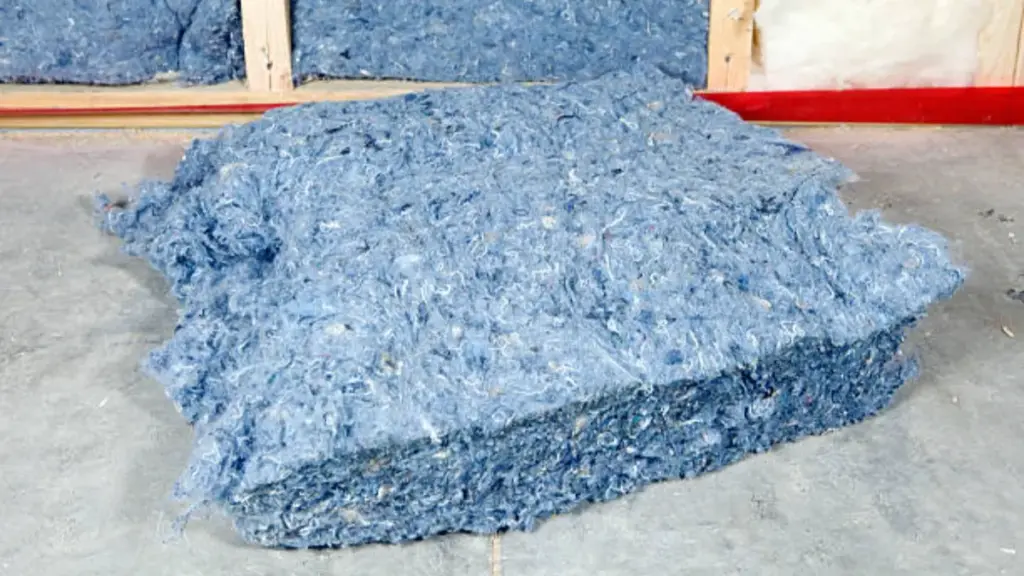
قبل أن تغوص في إنتاج الدنيم القطني المُعاد تدويره, ستحتاج إلى جمع أدوات محددة وتأمين الشهادات الصحيحة. إليك بعض النقاط التي تحتاج إلى ملاحظتها:
| غرض | وصف | غاية |
|---|---|---|
| نفايات القطن قبل وبعد الاستهلاك | بقايا القماش من غرف القطع وملابس الدنيم المستعملة التي تم جمعها من المستهلكين | هذه بمثابة المواد الخام المصدر الخاص بك, إعطاء المنسوجات المهملة حياة ثانية مع إلغاء الحاجة إلى زراعة القطن البكر |
| معدات إعادة التدوير الميكانيكية | آلات صناعية مصممة لطحن المنسوجات وتحويلها إلى ألياف من خلال المعالجة الميكانيكية | تحويل نفايات القطن مرة أخرى إلى ألياف خام قابلة للاستخدام تحافظ على جودة مماثلة للقطن التقليدي |
| أدوات الغزل والنسيج | آلات إنتاج الخيوط لغزل الألياف على بكرات وأنوال كبيرة بدون مكوك لنسج التويل | قم بإنشاء بنية خيوط متسقة ونسج التضليع القطري المميز الذي يحدد نسيج الدنيم |
| المعيار العالمي المعاد تدويره (GRS) شهادة | شهادة الاستدامة من طرف ثالث للتحقق من المحتوى المعاد تدويره وممارسات الإنتاج الأخلاقية | تأكد من أن مصادر المواد الخاصة بك تلبي المعايير المعترف بها دوليًا للتصنيع الصديق للبيئة والأخلاقي |
| مزج الألياف (خياري) | القطن البكر أو الألياف الاصطناعية مثل البوليستر أو الإيلاستين للمزج الاستراتيجي | تعزيز خصائص النسيج المحددة مثل المتانة, تمتد, أو مقاومة التجاعيد مع الحفاظ على أهداف الاستدامة |
خطوة 1: مصدر وفرز نفايات القطن المعاد تدويرها
تحديد قطن ما قبل الاستهلاك مقابل قطن ما بعد الاستهلاك
عندما تبدأ رحلتك للقطن المعاد تدويره, أول شيء عليك أن تفهمه هو من أين تأتي المواد الخام الخاصة بك. ستعمل مع تيارين مختلفين: نفايات ما قبل الاستهلاك ونفايات ما بعد الاستهلاك. كل منها يجلب نقاط قوته الخاصة لإنتاج الدنيم الخاص بك.
تأتي نفايات ما قبل الاستهلاك من أرضيات التصنيع، فكر في قصاصات القماش المتبقية من أنماط القطع, تجاوزات الإنتاج, وبقايا النسيج التي لم يتم تحويلها إلى ملابس جاهزة. عادةً ما تكون هذه المادة أنظف وأكثر تجانسًا لأنها لم يتم ارتداؤها أو غسلها. نفايات ما بعد الاستهلاك, على الجانب الآخر, يتكون من ملابس الدنيم الفعلية التي ارتداها الناس وتخلصوا منها. يتم جمع هذه الجينز والسترات المستعملة, مرتبة, والمستصلحة لألياف القطن الخاصة بهم.
إليك ما تحتاج إلى تحديد أولوياته أثناء الفرز:
- تأكد من أن الأقمشة القطنية تهيمن على مصادرك، فأنت تصنع الدنيم, لذلك يجب أن تكون قصاصات الدنيم والمنسوجات الغنية بالقطن هي أهدافك الأساسية.
- قم بإزالة المواد غير الدنيم مثل مزيج البوليستر, السوستة, أزرار, والزخارف الاصطناعية التي يمكن أن تؤثر على جودة الألياف.
- قم بفصل أوزان وألوان القماش المختلفة عندما يكون ذلك ممكنًا للحفاظ على الاتساق في المخرجات المعاد تدويرها.
خطوة 2: إعادة تدوير ألياف القطن ميكانيكيًا
الطحن الميكانيكي وإعداد الألياف
بمجرد فرز المواد الخاصة بك, حان الوقت لتحويلها إلى ألياف قابلة للاستخدام. هذا هو المكان الذي تأتي فيه آلات الطحن المتخصصة، فهي مصممة لتقسيم القماش إلى خيوط ومن ثم إلى شكل ألياف خام. فكر في الأمر على أنه إعادة هندسة عكسية للدنيم الخاص بك إلى وحدات البناء الأساسية.
إليك ما يجعل هذه الخطوة حاسمة: تحتاج إلى الحفاظ على طول الألياف قدر الإمكان. يمكن للألياف الأقصر أن تؤثر على قوة القماش النهائي, لذلك تم تصميم آلات إعادة التدوير الحديثة لتقليل هذه الخسارة. ستحتاج إلى العمل باستخدام المعدات التي تعالج المواد بلطف مع إزالة أي ملوثات مثل الأزرار, السوستة, أو خيوط غير قطنية.
التحدي الذي ستواجهه هو أن إعادة التدوير الميكانيكية تعمل بشكل طبيعي على تقصير الألياف مقارنة بالقطن البكر. لكن لا تدع ذلك يثبط عزيمتك. يمكنك التعويض عن طريق:
- مزج الألياف المعاد تدويرها مع نسبة قليلة من القطن البكر للحفاظ على القوة
- ضبط معلمات الغزل الخاصة بك لمراعاة أطوال الألياف الأقصر
- استخدام تقنيات التمشيط المتقدمة التي تعمل على محاذاة الألياف بشكل أكثر فعالية
بمجرد أن تصبح الألياف نظيفة ومجهزة, لقد تم نسجها على بكرات كبيرة, جاهز للمرحلة التالية من الإنتاج. تؤثر جودة هذا المستحضر بشكل مباشر على متانة وملمس الدنيم النهائي.
خطوة 3: مزيج القطن المعاد تدويره مع الألياف العذراء
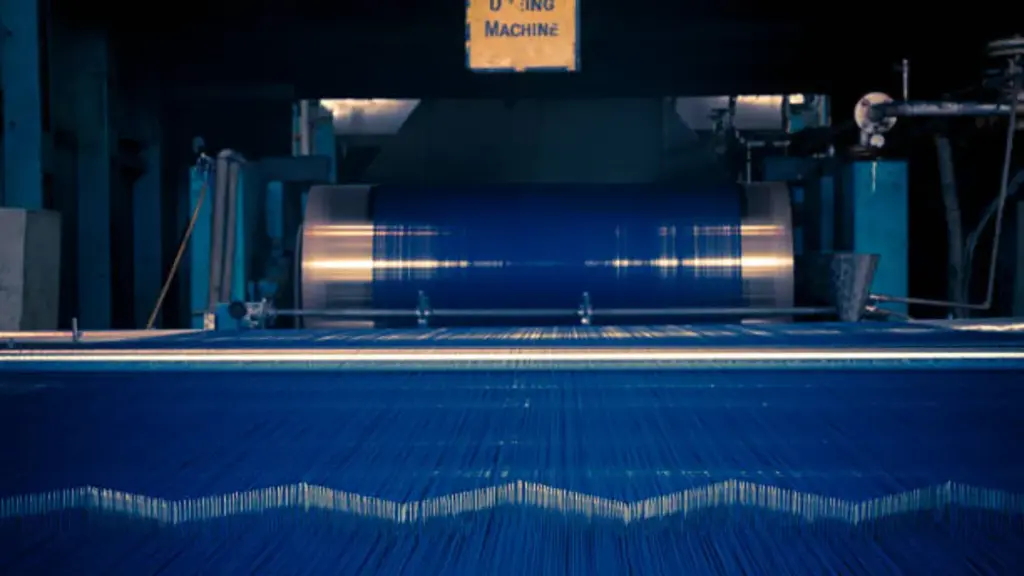
ابدأ بخلط القطن المعاد تدويره مع القطن البكر أو الألياف الاصطناعية مثل البوليستر أو الإيلاستين. ستؤثر نسبة المزج التي تختارها بشكل مباشر على خصائص القماش. إذا كنت تريد الكلاسيكية, قماش دينم مسامي بيد أكثر نعومة, اتكئ بشكل أثقل على القطن. إذا كنت بحاجة إلى امتداد إضافي لملاءمة عصرية أو قوة معززة لملابس العمل, أدخل الإيلاستين أو البوليستر في المزيج.
يعتمد ضبط نسبة المزج على الأداء الذي تريده من الدنيم الخاص بك. يساعد المحتوى العالي من القطن المعاد تدويره على تقليل التأثير البيئي من خلال إعادة استخدام نفايات النسيج وتوفير الموارد. يمكن أن تؤدي إضافة القطن البكر أو الألياف الاصطناعية إلى تحسين القوة, مرونة, مقاومة التجاعيد, والمتانة الشاملة, جعل القماش مناسبًا لأنماط واستخدامات الدنيم المختلفة.
دنيم مخصص مصمم خصيصًا لرؤية علامتك التجارية
كن شريكًا مع شركة مصنعة موثوقة للدنيم توفر تحكمًا كاملاً بدءًا من القماش وحتى النهاية. استفد من أحجام الطلبات المرنة, مواد مستدامة, ومئات من الأنماط الجديدة شهريًا لإضفاء الحيوية على تصميمات الدنيم الفريدة الخاصة بك.
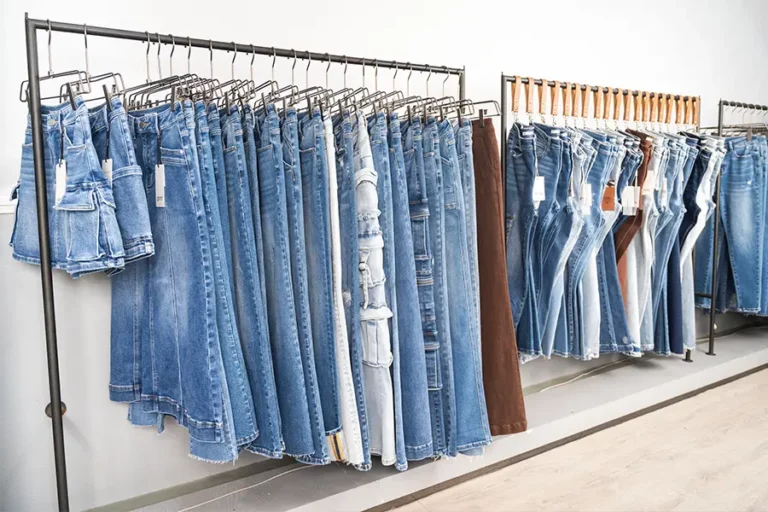
خطوة 4: تدور وتنسج خيوط القطن المعاد تدويرها
عملية الغزل تأخذ تلك التي تم تنظيفها, الألياف المخلوطة ويحولها إلى قوية, غزل متسق. ستستخدم نفس الأساليب التي تطبقها على تمشيط القطن البكر لمحاذاة الألياف, ثم غزلها إلى خيوط جاهزة للنول.
هنا يلتقي التقليد مع الابتكار. يتم نسج خيوط القطن المُعاد تدويرها في قماش الدنيم باستخدام نمط النسيج القطني الكلاسيكي. وهذا يخلق هذا التضليع القطري المميز الذي تعرفه وتحبه، وهو الملمس الذي يجعل الدنيم يمكن التعرف عليه على الفور. المفتاح هو الحفاظ على رقابة مشددة على اتساق الغزل الخاص بك, لأن التوتر والتوزيع الموحد للألياف يؤثران بشكل مباشر على قوة القماش ومظهره.
خطوة 5: الصباغة والتشطيب من أجل الدنيم المستدام
سوف تقوم بالتقديم صبغة نيلي- أو استكشف البدائل الصديقة للبيئة مثل الأصباغ النباتية أو الاصطناعية منخفضة التأثير - والتي تترابط بشكل جميل مع الألياف المعاد تدويرها. المفتاح هو اختيار الأصباغ التي تتناسب مع الخصائص الفريدة لمادتك مع مراقبة استخدام المياه والجريان السطحي للمواد الكيميائية.
التشطيب هو المكان الذي تقوم فيه بتحسين ملمس القماش وأدائه. تقنيات مثل التعقيم تعمل على تقليص حجم الدنيم الخاص بك مسبقًا, لذلك لن يواجه عملاؤك مشكلات غير متوقعة في الحجم بعد الغسلة الأولى. يمكن لغسول الإنزيم أن ينعم ملمس اليد ويخلق تأثيرات عتيقة خفية بدون مواد كيميائية قاسية. هذه العمليات ليست مجرد مستحضرات تجميلية، بل إنها ضرورية للحفاظ على المتانة والراحة.
تصبح مراقبة الجودة مهمة هنا. ستحتاج إلى اختبار كل دفعة:
- ثبات اللون لضمان بقاء الصبغة نابضة بالحياة غسلة بعد غسلة
- قوة الشد للتأكد من أن القماش المعاد تدويره يمكنه تحمل التآكل اليومي
- اتساق السطح للحفاظ على هذا الملمس المتميز الذي تعد به علامتك التجارية
القطن المعاد تدويره مقابل القطن البكر: ما هو الفرق?
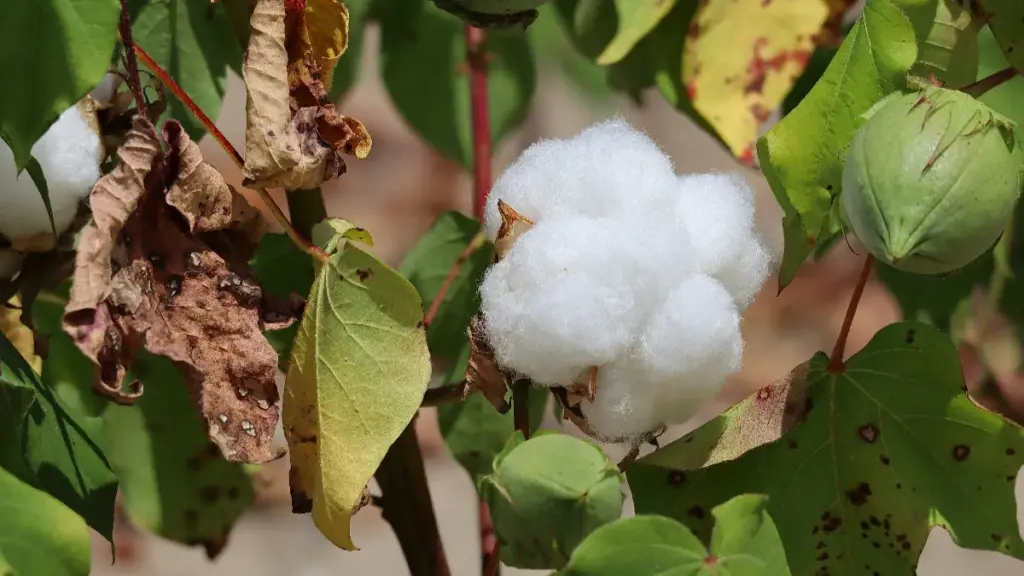
عندما تختار بين القطن المعاد تدويره والقطن البكر لخط الدنيم الخاص بك, عليك أن تفهم الاختلافات الحقيقية. دعنا نحلل الخصائص الرئيسية جنبًا إلى جنب حتى تتمكن من اتخاذ قرار مستنير لعلامتك التجارية.
| ميزة | قطن الدنيم المُعاد تدويره | الدنيم القطني البكر |
|---|---|---|
| مصدر | نفايات الأقمشة قبل الاستهلاك الناتجة عن التصنيع والملابس المستعملة بعد الاستهلاك والتي يتم فرزها واستخلاصها بعناية | القطن المحصود حديثاً من الزراعة, تتطلب استخدامًا واسعًا للأراضي وبنية تحتية زراعية |
| طريقة المعالجة | يقوم الطحن الميكانيكي بتكسير المنسوجات الموجودة إلى ألياف خام, والتي يتم بعد ذلك غزلها وتحويلها إلى خيوط، متجاوزة الزراعة تمامًا | زراعة القطن, حصاد, حلج لإزالة البذور, تنظيف الألياف, تمشيط, والغزل في الغزل |
| استخدام المياه | تم تقليله بشكل كبير نظرًا لعدم وجود مرحلة زراعة. أنت توفر كميات هائلة من المياه التي ستستخدم في زراعة القطن الخام ومعالجته | مرتفعة للغاية بسبب احتياجات الري لزراعة القطن, بالإضافة إلى كمية كبيرة من المياه اللازمة للمعالجة الأولية والحلج |
| جودة الألياف | جودة مماثلة للقطن البكر عند معالجته بشكل صحيح. يمكن لإعادة التدوير الميكانيكية تقصير الألياف قليلاً, لكن التكنولوجيا الحديثة تحافظ على القوة والثبات | ألياف طويلة التيلة قوية وموحدة بشكل طبيعي, بجودة متسقة اعتمادًا على تنوع القطن وظروف النمو |
| متانة | يتم الحفاظ عليه من خلال تقنيات الغزل المتقدمة والمزج الاستراتيجي مع الألياف البكر عند الحاجة. الدنيم النهائي يلبي معايير الصناعة لطول العمر | قوي ومتين بشكل طبيعي منذ البداية, مع ألياف طويلة توفر سلامة هيكلية ممتازة للدنيم عالي التحمل |
| التأثير البيئي |
|
|
| كفاءة التكلفة | من المحتمل أن تقلل تكاليف المواد الخام نظرًا لأنك تستخدم مجاري النفايات. كما تعمل المعالجة الأقل استهلاكًا للطاقة على تقليل النفقات التشغيلية | ترتبط التكاليف المرتفعة بالمدخلات الزراعية مثل الأرض, ماء, بذور, والعمل. الأصناف الممتازة طويلة التيلة تتطلب أسعارًا أعلى |
نصائح الخبراء & الأخطاء الشائعة في القطن المعاد تدويره
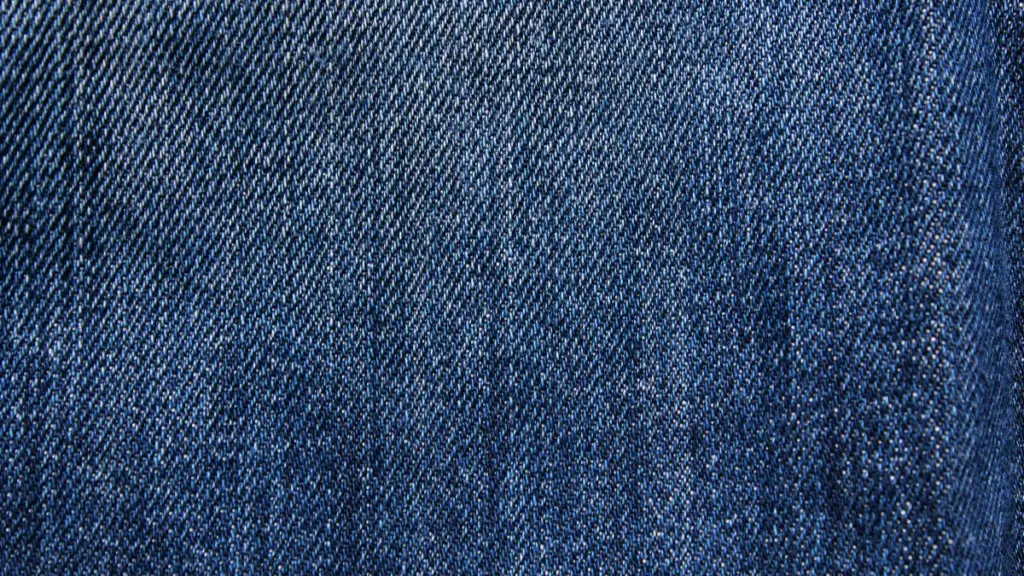
إذا كنت تغامر بشراء الدنيم القطني المُعاد تدويره, ستحتاج إلى تجنب المخاطر التي يمكن أن تؤثر على الجودة والاستدامة. دعونا نتعرف على الأخطاء الأكثر شيوعًا وكيف يمكنك تجنبها.
| خطأ شائع | حل / كيفية تجنب |
|---|---|
| استخدام نفايات ما بعد الاستهلاك منخفضة الجودة | المصدر مرتبة بشكل جيد, في المقام الأول نفايات قماش الدنيم. أنت تقوم ببناء الجودة من الألف إلى الياء, وهذا يبدأ باختيار نظيف, المواد المصنفة. تمنحك بقايا القطع قبل الاستهلاك والدنيم بعد الاستهلاك أفضل أساس لأنها تحافظ على خصائص الألياف التي تحتاجها. |
| الإفراط في استخدام المحتوى المعاد تدويره دون مزجه | مزيج مع الألياف البكر للحفاظ على المتانة. أ 100% النهج المعاد تدويره يبدو جذابا, لكن المزج يمنحك القوة وطول العمر الذي يتوقعه عملاؤك. يحافظ هذا التوازن على منتجك صديقًا للبيئة وجاهزًا للأداء. |
| تجاهل تقليل طول الألياف | استخدم تكنولوجيا إعادة التدوير الميكانيكية المتقدمة. يمكن لعملية الطحن تقصير الألياف, مما يؤثر على جودة القماش النهائية. المعدات الحديثة تحافظ على سلامة الألياف, ضمان أداء القطن المعاد تدويره تمامًا مثل القطن التقليدي في المنتج النهائي. |
| إهمال معايير الشهادات | الالتزام بـ GRS وشهادات الاستدامة الأخرى. يهتم عملاؤك بالمطالبات التي تم التحقق منها. تؤكد الشهادات مثل المعيار العالمي لإعادة التدوير التزامك بمبادئ الاقتصاد الدائري وتمنح المشترين الثقة في عمليتك. |
| تخطي ضوابط الجودة في الغزل والتشطيب | تنفيذ اختبارات صارمة في كل مرحلة. يستحق القطن المعاد تدويره نفس التدقيق الذي تخضع له المواد الخام. اختبار قوة الغزل الخاص بك, تحقق من اتساق الصباغة الخاص بك, والتحقق من عمليات التشطيب الخاصة بك. هذا الاهتمام بالتفاصيل يفصل بين الدنيم المعاد تدويره والمنتجات الاستثنائية. |
الأسئلة المتداولة حول قطن الدنيم المعاد تدويره
ما هو الفرق بين القطن المعاد تدويره قبل الاستهلاك وبعده؟?
يأتي القطن المعاد تدويره قبل الاستهلاك من قصاصات القماش المتبقية أثناء التصنيع - فكر في البقايا من غرف القطع التي لم تصبح ملابس جاهزة أبدًا. يتم الحصول على القطن المُعاد تدويره بعد الاستهلاك من الملابس المستعملة التي يتم جمعها, مرتبة, ويتم تفكيكها ميكانيكيًا لاستعادة الألياف لإنتاج جديد.
يعتبر القطن المعاد تدويره قويًا مثل القطن البكر في منتجات الدنيم?
نعم, عند معالجتها بشكل صحيح باستخدام تقنيات إعادة التدوير الحديثة, يحافظ القطن المعاد تدويره على نفس الجودة والمتانة مثل القطن البكر التقليدي. لقد تطورت عملية الطحن الميكانيكية للحفاظ على سلامة الألياف, لذلك تحصل على قوة قابلة للمقارنة دون المساس بالأداء.
ما هو الحد الأقصى لنسبة القطن المعاد تدويره في خلطات الدنيم?
يمكنك إنشاء الدنيم مع 100% القطن المعاد تدويره, على الرغم من أن العديد من الشركات المصنعة تمزجها مع ألياف خام أو مواد صناعية مثل الإيلاستين لتحسين التمدد والمتانة. تعتمد النسبة حقًا على أهداف التصميم الخاصة بك - غالبًا ما تسعى العلامات التجارية التي تركز على الاستدامة إلى زيادة المحتوى المعاد تدويره مع الحفاظ على خصائص الأداء التي يتوقعها عملاؤك.
ماذا يفعل المعيار العالمي المعاد تدويره (GRS) شهادة يقصد?
تتحقق شهادة GRS من أن القطن المعاد تدويره يلبي المعايير البيئية والاجتماعية الصارمة في جميع أنحاء سلسلة التوريد. يتتبع المحتوى المعاد تدويره, يضمن أساليب المعالجة المسؤولة, ويؤكد أن الدنيم الخاص بك يلبي معايير الاستدامة ومعايير الإنتاج الأخلاقية - مما يمنح عملائك الثقة في التزامك بمبادئ الاقتصاد الدائري.
كيف يؤثر القطن المعاد تدويره على ملمس ومظهر قماش الدنيم?
يبدو الدنيم القطني المُعاد تدويره مطابقًا للدنيم التقليدي عند استخدام تقنيات الصباغة والنسيج المناسبة. اللون النيلي المميز, نسيج قطني طويل قطري, ويظل ملمس اليد دون تغيير لأن الألياف المعاد تدويرها تخضع لنفس عمليات التشطيب التي يخضع لها القطن البكر.
طريقك إلى الأمام
يتيح استخدام القطن المعاد تدويره في صناعة الدنيم للمصنعين تحويل نفايات النسيج إلى مواد متينة, جينز عالي الجودة. باتباع المصادر المناسبة, إعادة التدوير, مزج, وخطوات التشطيب, يمكنك إنتاج الدنيم الذي يلبي معايير الأداء مع تقليل استخدام المياه, خفض الانبعاثات, والتقليل من نفايات مدافن النفايات. إن اختيار القطن المعاد تدويره يدعم الإنتاج المستدام دون المساس بقوة القماش أو مظهره, مساعدة العلامات التجارية على إنتاج الدنيم الصديق للبيئة بكفاءة وموثوقية.
في Changhong, نحن نستخدم القطن المعاد تدويره في إنتاجنا, تجمع بين الاستدامة والجودة المتسقة لتقديم الدنيم الفاخر للعلامات التجارية الحديثة. إذا كان لديك أي سؤال, لو سمحت اتصل بنا مباشرة.


